ok,this is a way to save money on your power bills by powering your fans ,pumps,ect.. with solar power.
what you need
1 pack of 8 garden lights(can be bought from walmart,mine are westinghouse)
piece of wood to mount your panals(get your panals and measure from there)
volt meter
2 switches(optional)
wire
deep cycle car battery
power converter for a car(for taking 12 volt and making it 120-240)
hot glue gun
hot glue
--------------------------------------------------------------------------
ok what to do,,ok after you get all of your solar panals out of the cases test each one to make sure you get around the same power from all of them,one bad panel can mess the whole thing up(remember for later)
step 1-open the light case ,use a flat head screwdriver to pop the case open ,
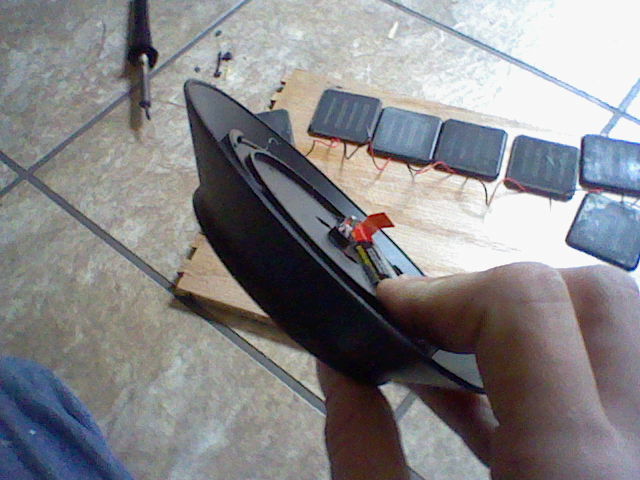
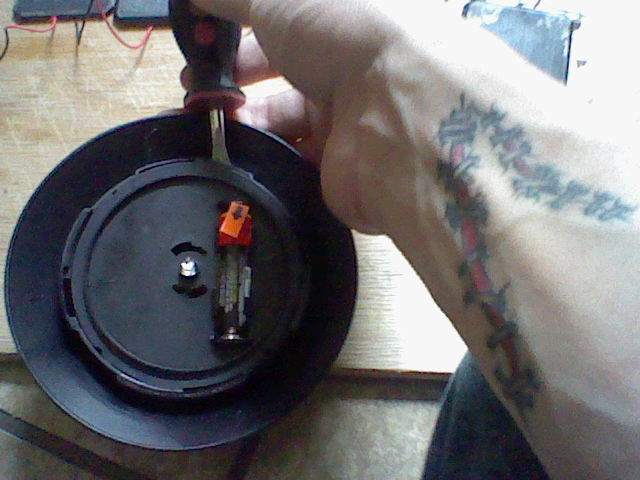
step 2-locate the solar panal and follow the pos and neg back to the green board,cut them as close as you can,now if you got the same ones i did your going to have to cut them out of the plastic top,i took the flathead and CAREFULLY go along the edge and press it into the glue to cut it,they are fragile so be very careful
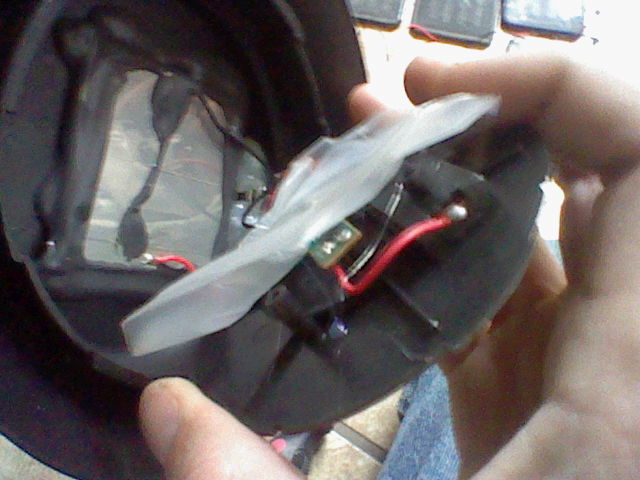
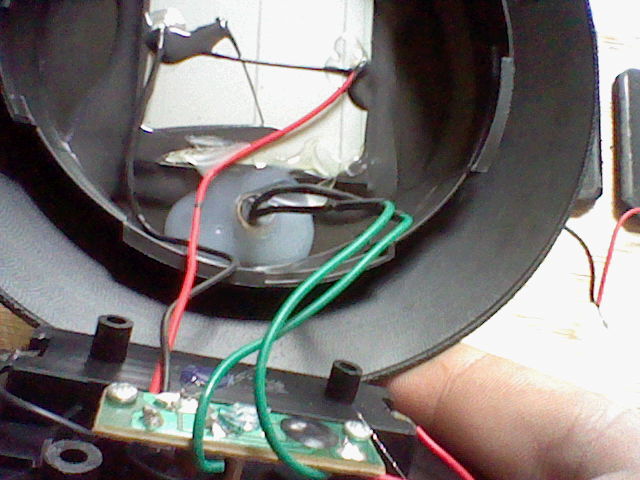
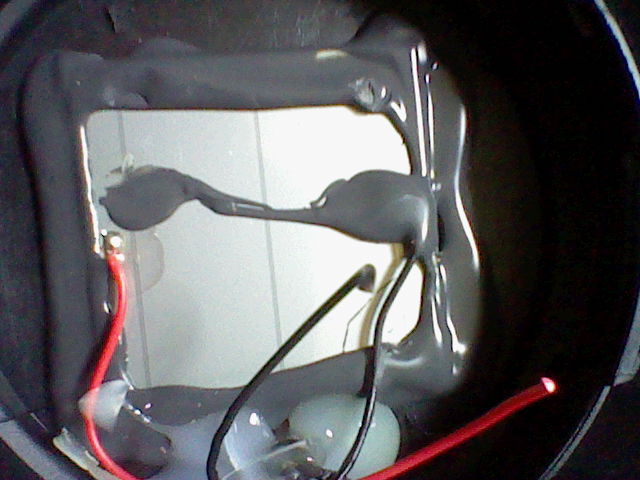
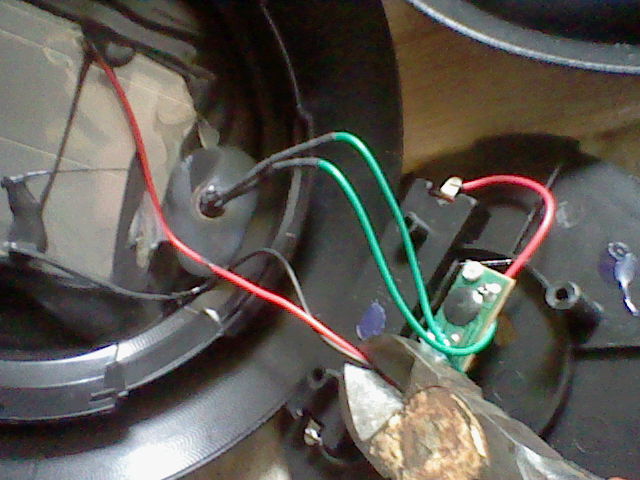
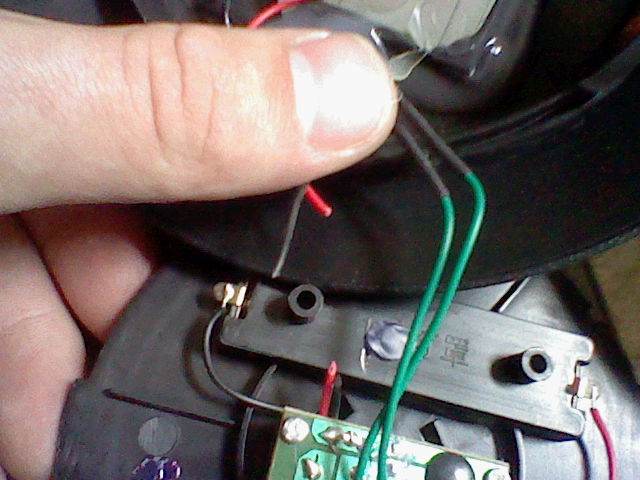
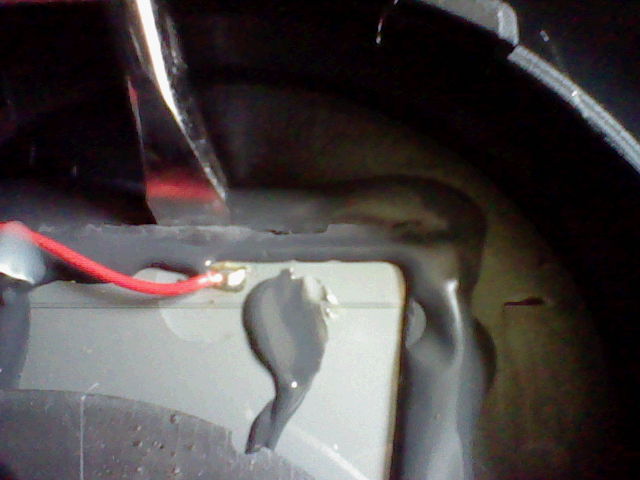
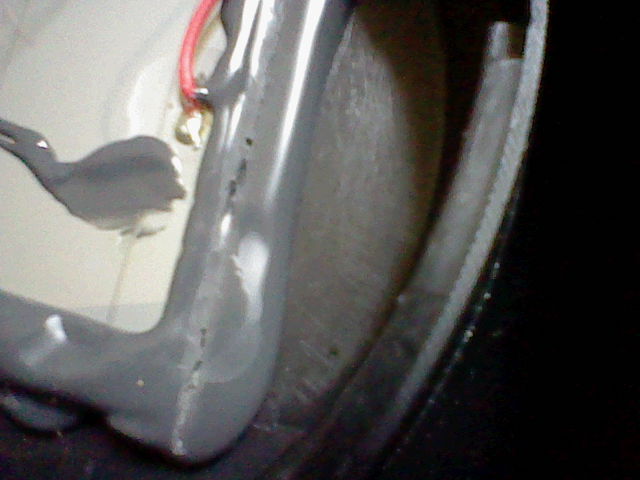
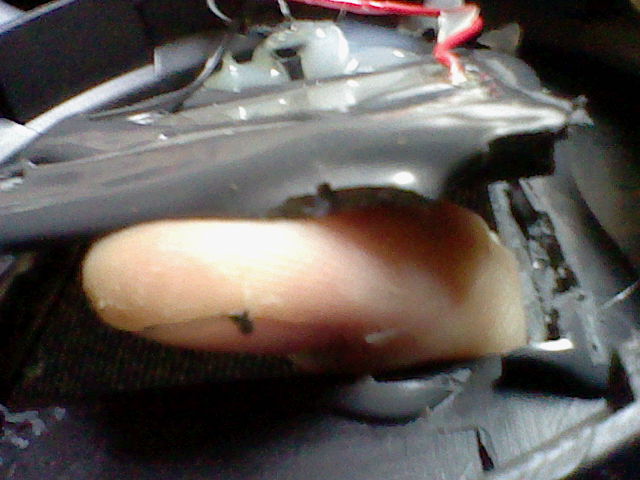
step 3- ok take your green board and soldiering iron,un-soldier the dioad (spelled wrong) from the board,
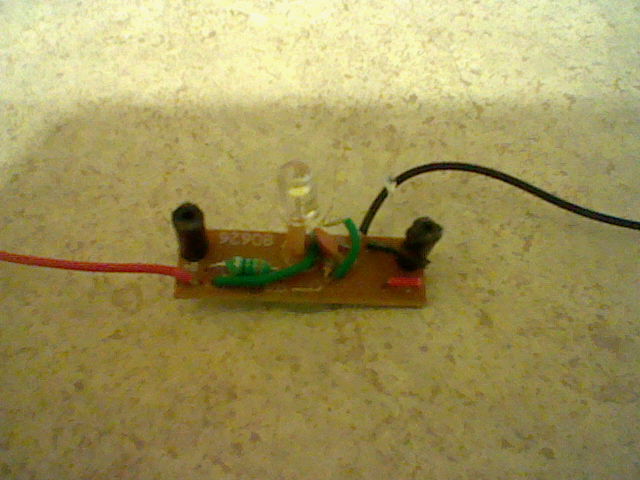
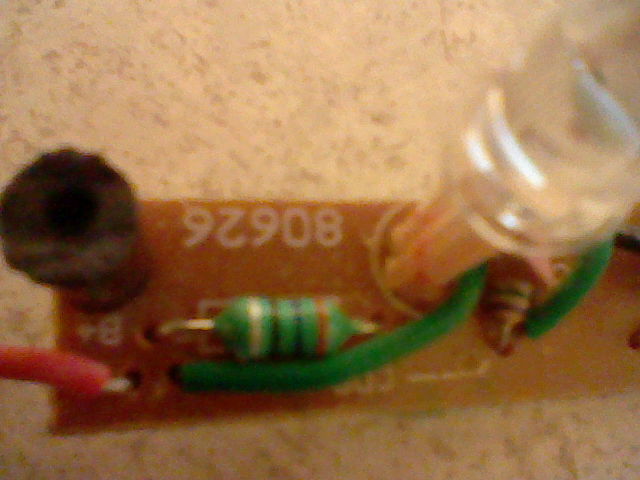
after that take one of the solar panals and the dioad ,on the dioad you will see 1 stripe or a few stripes,pos>>--:::|:--,,or --:|:|:|:|::--<<pos,,,
the end that is farthest away from the nearest stripe gets soldiered on the positive wire of your solar panel (in my case it was silver) .
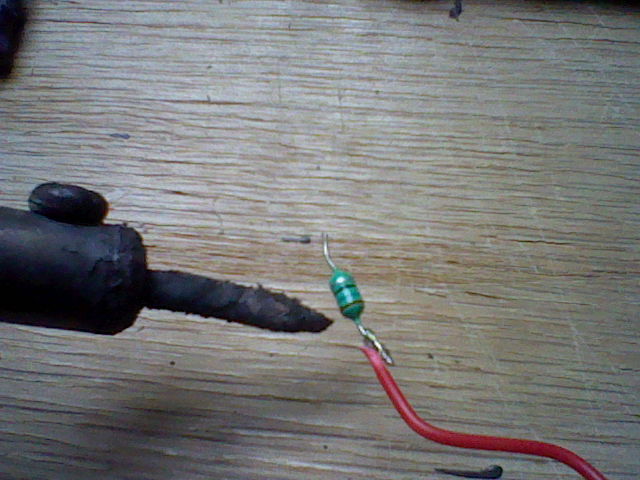
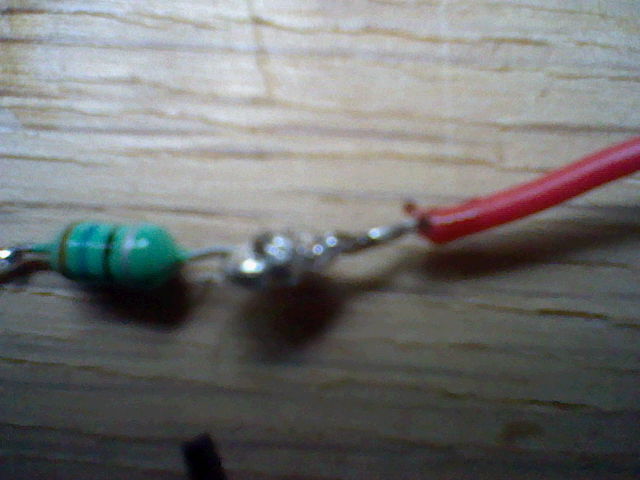
now soldier a piece of wire on the other end of the dioad (makes it easier to hook it up)
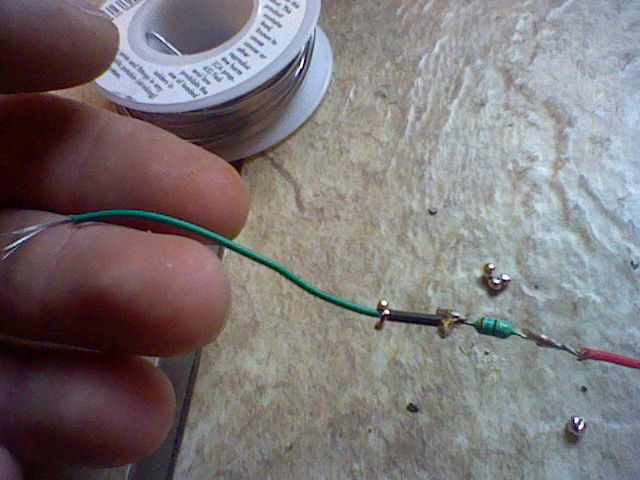
step 4-wiring the panels and fixing on wood
ok after you have tested all your panels with your volt meter find somthing suitable to mount them on,i used a piece of wood but if you want to water proof it you can, take the panel with the dioad on it and connect the neg to the positive on another panel,then take that panel and connect its neg with a nother pos until you run out,when you wire the last one leave the neg on it alone for now,,so now you should have a pos end with a dioad and a neg end by itself.once you have the chain of panels made it is time to test,take it outside and connect you volt meter to it,,depending on how many you have and what power they are you should get 12-30 volts on the meter,higher is good,,the ones i bought were better then what i had so i dident want to drain power and stuck with the new 8 for now ,after you work out any kinks it is time to secure them to the mounting surface,i used hot glue and it worked out great because of the way the wires are ,you will want everything secure.i just put one down ,got it even and pooled glue all around the sides and corners,after i had the panels secure i glued down the wires
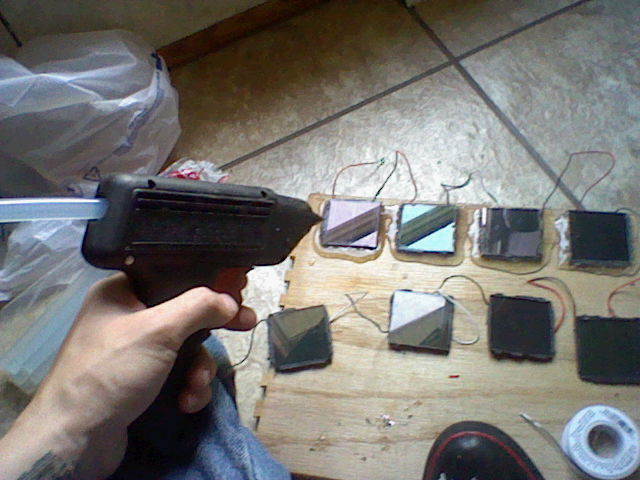
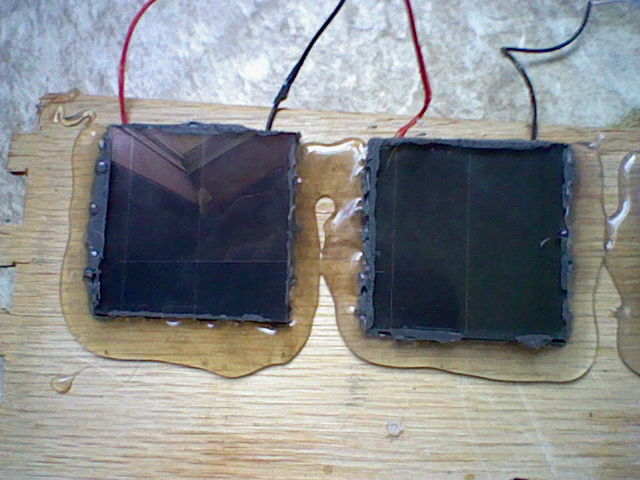
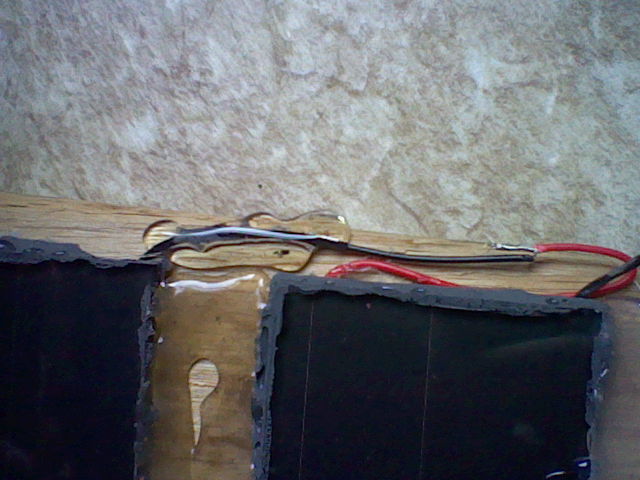
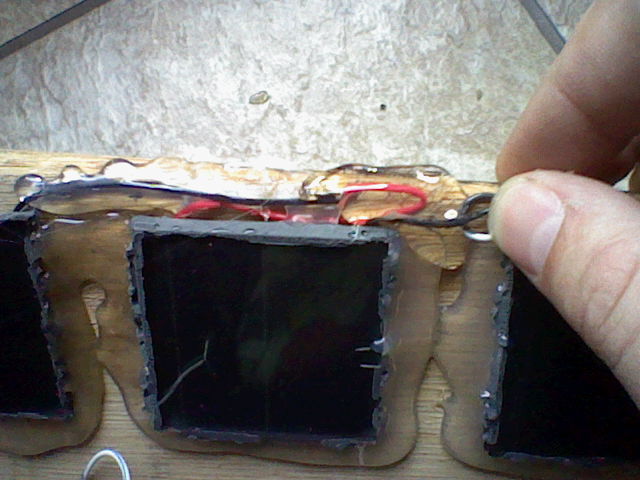
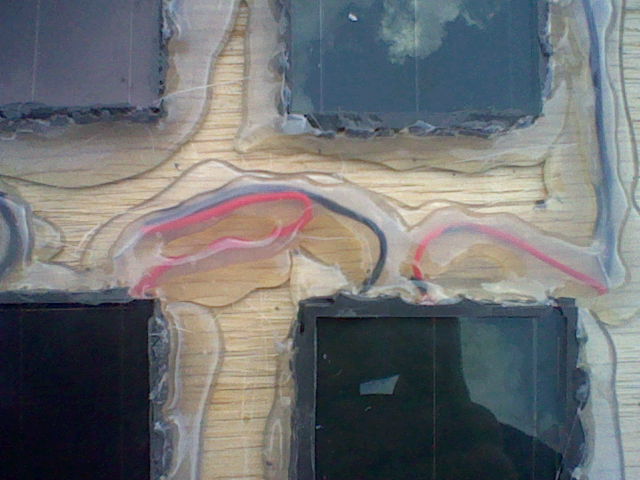
and this is what it looks like
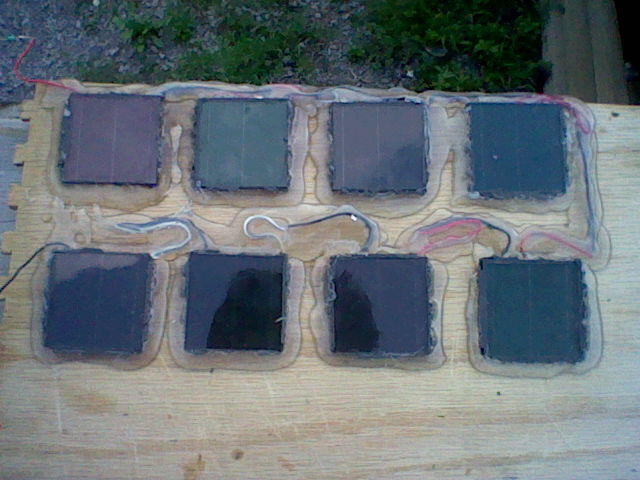
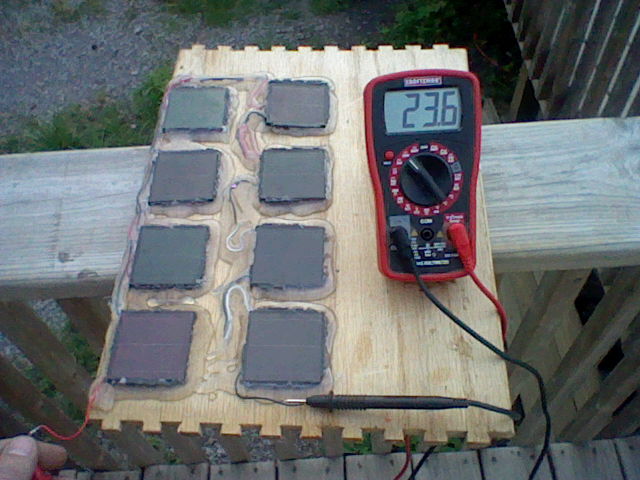
now onto the power inverter,ive had this one for a while but it doesent put out much,,get one with a high output rating for more power(more things on)
step one-cut cord
cut the cord on the inverter about 2 in below the car plug (incase you ever need it)
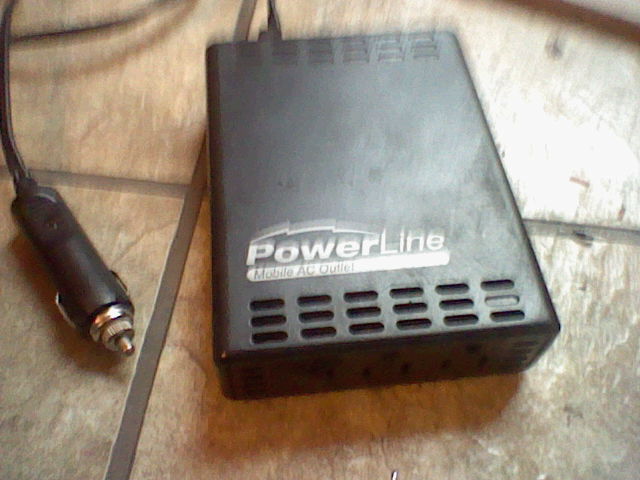
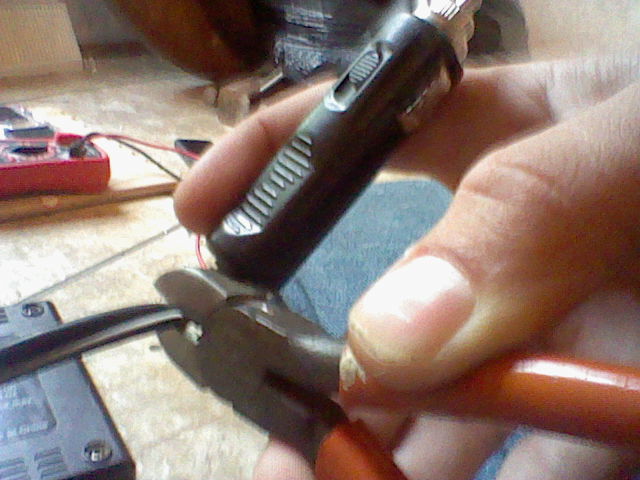
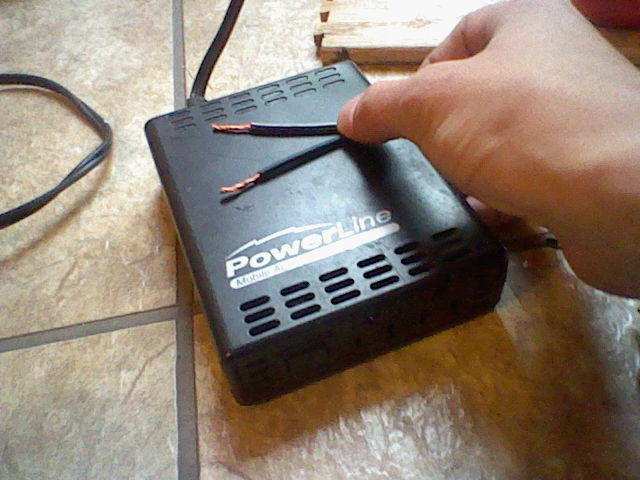
ok now that it is ready we will hook it to the battery,just regular pos and neg
hook up,run a pos and neg wire to the solar panel(this is why you needed the other piece of wire on the end of the dioad) hook panel pos to a switch and and batt pos to the other end of the switch ,then hook panel neg to batt neg,so by now the batt should have 2 pos wires and 2 neg wires coming off of it, one pos leads to the switch and one to the inverter,
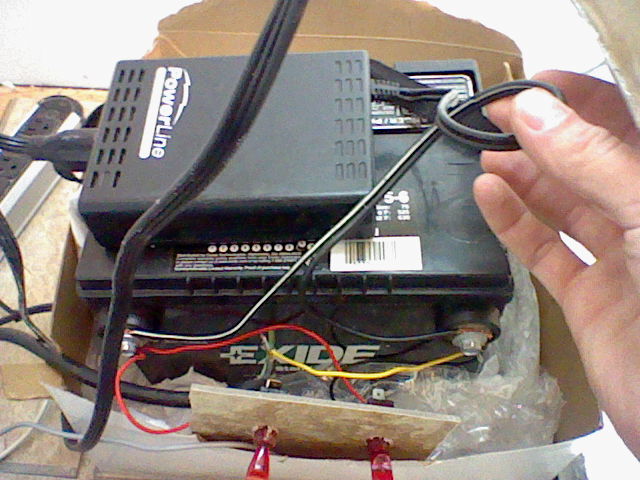
ok i think i have covered everything,,ive got an extra wire on my batt ,but you only need the switched panels and the inverter_please any questions and i will be more then happy to help
what you need
1 pack of 8 garden lights(can be bought from walmart,mine are westinghouse)
piece of wood to mount your panals(get your panals and measure from there)
volt meter
2 switches(optional)
wire
deep cycle car battery
power converter for a car(for taking 12 volt and making it 120-240)
hot glue gun
hot glue
--------------------------------------------------------------------------
ok what to do,,ok after you get all of your solar panals out of the cases test each one to make sure you get around the same power from all of them,one bad panel can mess the whole thing up(remember for later)
step 1-open the light case ,use a flat head screwdriver to pop the case open ,
step 2-locate the solar panal and follow the pos and neg back to the green board,cut them as close as you can,now if you got the same ones i did your going to have to cut them out of the plastic top,i took the flathead and CAREFULLY go along the edge and press it into the glue to cut it,they are fragile so be very careful
step 3- ok take your green board and soldiering iron,un-soldier the dioad (spelled wrong) from the board,
after that take one of the solar panals and the dioad ,on the dioad you will see 1 stripe or a few stripes,pos>>--:::|:--,,or --:|:|:|:|::--<<pos,,,
the end that is farthest away from the nearest stripe gets soldiered on the positive wire of your solar panel (in my case it was silver) .
now soldier a piece of wire on the other end of the dioad (makes it easier to hook it up)
step 4-wiring the panels and fixing on wood
ok after you have tested all your panels with your volt meter find somthing suitable to mount them on,i used a piece of wood but if you want to water proof it you can, take the panel with the dioad on it and connect the neg to the positive on another panel,then take that panel and connect its neg with a nother pos until you run out,when you wire the last one leave the neg on it alone for now,,so now you should have a pos end with a dioad and a neg end by itself.once you have the chain of panels made it is time to test,take it outside and connect you volt meter to it,,depending on how many you have and what power they are you should get 12-30 volts on the meter,higher is good,,the ones i bought were better then what i had so i dident want to drain power and stuck with the new 8 for now ,after you work out any kinks it is time to secure them to the mounting surface,i used hot glue and it worked out great because of the way the wires are ,you will want everything secure.i just put one down ,got it even and pooled glue all around the sides and corners,after i had the panels secure i glued down the wires
and this is what it looks like
now onto the power inverter,ive had this one for a while but it doesent put out much,,get one with a high output rating for more power(more things on)
step one-cut cord
cut the cord on the inverter about 2 in below the car plug (incase you ever need it)
ok now that it is ready we will hook it to the battery,just regular pos and neg
hook up,run a pos and neg wire to the solar panel(this is why you needed the other piece of wire on the end of the dioad) hook panel pos to a switch and and batt pos to the other end of the switch ,then hook panel neg to batt neg,so by now the batt should have 2 pos wires and 2 neg wires coming off of it, one pos leads to the switch and one to the inverter,
ok i think i have covered everything,,ive got an extra wire on my batt ,but you only need the switched panels and the inverter_please any questions and i will be more then happy to help





